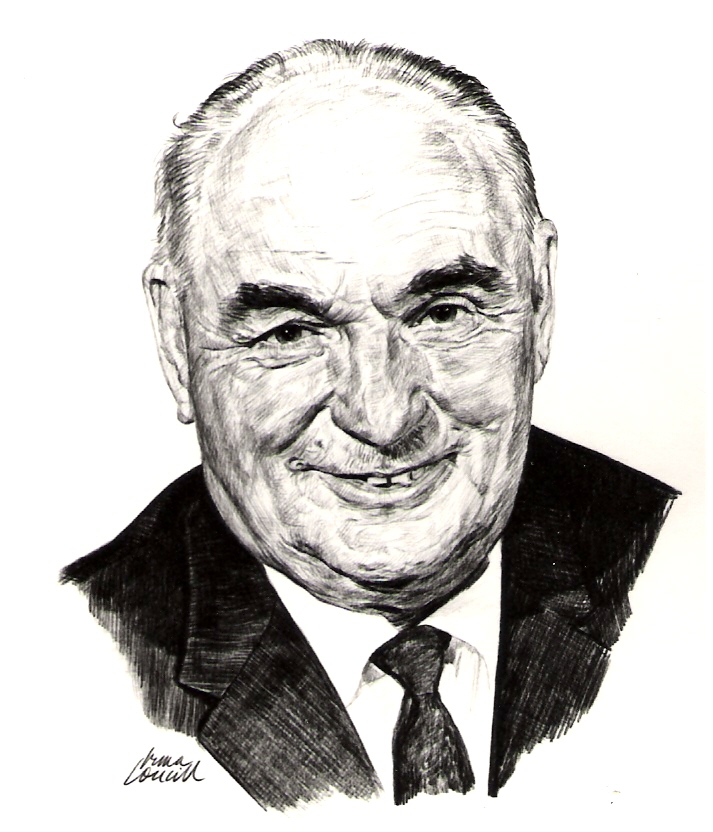Robert Cheetham Randall

Nickname: Bob
Birth Date: November 2, 1908
Birthplace: Saskatoon, Saskatchewan
Death Date: December 11, 2004
Year Inducted: 1974
His pioneer flights over unmapped mountains, and his dedication to purpose during the 1937 aerial search for six Russian fliers, despite adversity, have been of outstanding benefit to Canadian aviation
Flying in Saskatchewan
Robert Cheetham (Bob) Randall was born in Saskatoon, Saskatchewan, on November 2, 1908, where he was educated. He learned to fly with the Saskatoon Aero Club in 1928, and the following year obtained licences in both the Private and Commercial Pilot categories. He was hired by Cherry Red Airlines operating out of Prince Albert, Saskatchewan, to the Lac La Ronge area. He worked for Bilby Air Service at Saskatoon. Duncan Motors at Regina acquired his services a year later for barnstorming activities in the Saskatoon area.
Pioneering a Mail Run
In 1931 he joined Brooks Airways at Prince Albert as a bush pilot, and in 1932 was given leave to complete a Royal Canadian Air Force (RCAF) instrument flight course where he distinguished himself by receiving top honours. A flying assignment in 1934 to the Yukon Territory resulted in employment with Northern Airways, based at Carcross, on Lake Bennett. Here, Randall pioneered the mail run between Atlin and Telegraph Creek.
High Altitude Flights
The National Geographic Society hired him in 1935 to make photographic and supply flights over the unmapped territory of the St. Elias range for their Yukon Expedition led by explorer Bradford Washburn. Mountain peaks in this range, which straddles the Yukon-Alaska border, average 12,000 feet (3,657 m), topped by Mount St. Elias at 18,000 feet (5,486 m) and Mount Logan, Canada's highest mountain at 19,850 feet (6,050 m). He completed these high altitude flights in a Fairchild 71 with no supplemental oxygen supply. He made the first landing of an aircraft on a Canadian glacier. In recognition of his valuable assistance, he was named a member of the National Geographic Society that year.
Mackenzie Air Service
In 1937 Randall began to fly for Mackenzie Air Service, operated out of Edmonton, Alberta, by Leigh Brintnell. He was assigned to fly a route that took him through the mining areas of Goldpines, Saskatchewan, and Yellowknife, Northwest Territories, to the Eldorado radium mine on Great Bear Lake, and down the Mackenzie River to the Arctic coast.
A Long Aerial Search
During the late summer and fall of 1937 he was involved in what was to become one of aviation's longest aerial searches, covering the western Arctic from Siberia through Alaska and the Northwest Territories. The Russian pilot, Sigismund Levanevsky and his five companions, missing on a trans-polar flight from Moscow, U.S.S.R., to Fairbanks, Alaska, were never found. During the months-long search Randall covered thousands of flight miles, contributing immeasurably to Canada's knowledge of the Arctic coast. He gained the distinction of being second only to Charles Lindberg in making the dangerous flight between Aklavik in the Northwest Territories, and Point Barrow, Alaska. For his contribution to the search, he was named a Member of the Explorers Club.
Canadian Pacific Airlines
In 1940 he was promoted to Operations Manager of Mackenzie Air Service and continued in that capacity when the company was merged with Canadian Airways to form United Air Services. Canadian Pacific Airlines (CPA) absorbed this company in 1942 and Randall was loaned to Bechtel, Price & Callahan, an American contracting firm engaged in building the Canol pipeline from Norman Wells, Northwest Territories, to Whitehorse, Yukon. He was responsible for organizing and managing the flying operations until the job was completed one year later.
First Flight Over North Polar Routes
He returned to CPA, and for the next ten years, he flew as captain on domestic routes out of Edmonton, Alberta. In 1952 he was transferred to Vancouver, British Columbia, to fly overseas routes. In 1955 he captained the first scheduled airline flight over the north polar route, from Amsterdam, Holland, direct to Vancouver. In 1968 CPA officially changed its name to CP Air. Randall retired in 1968, after forty years of professional flying. He had flown in excess of 30,000 hours as Captain-in-Command of 44 types of aircraft, ranging from the smallest trainer to the largest jet, representing more than 10,000,000 miles (16,100,000 km) of flight distance.
The Randalls are a flying family. Mrs. Randall was flying her own aircraft as early as 1929. At the time of his retirement, three of Bob Randall's sons were flying for CPA. Twins Bob Jr., and Ted were hired in 1952, and in 1968 were serving as Captains on CP Air jets, and John, who joined CPA in 1965 was serving as First Officer on DC-8 aircraft on overseas routes.
Bob Randall died at Vancouver, B.C. on December 11, 2004 at age 96.
Robert Cheetham (Bob) Randall was inducted as a Member of Canada's Aviation Hall of Fame in 1974 at a ceremony held in Edmonton, Alberta.
To return to the Inductee Page, please click here.
